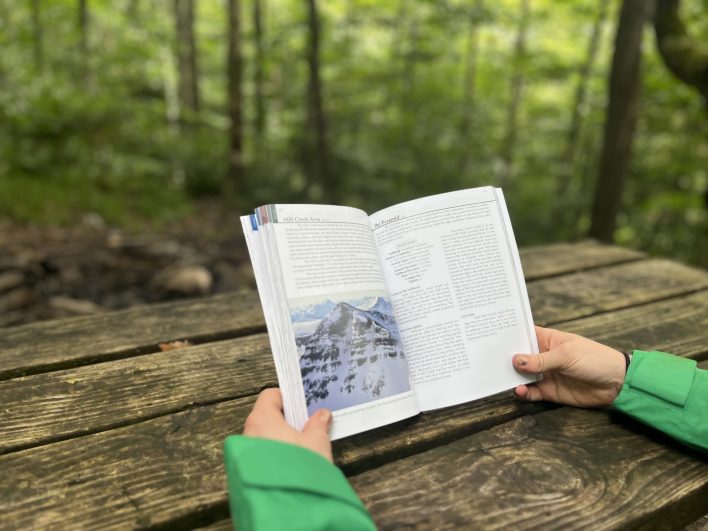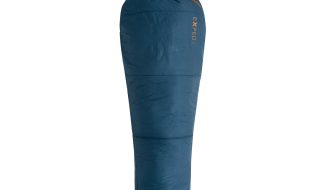Chris Kussmaul began exploring the Montana backcountry as a student at Montana State University. He found plentiful skiing, but very little information. With his guidebook, Peaks and Couloirs of Southwest Montana, Kussmaul set out to change that.
As Told By Chris Kussmaul

Chris Kussmaul moved to Montana after seeing a Craigslist ad for waiting tables. Taking time off from college, he spent the next three years oscillating seasonally between Glacier National Park and Telluride, Colorado. Having fallen in love with, in his words “all things outside and mountainous,” Kussmaul decided to finish his studies at Montana State University (MSU). During his time as a student there, he became president of the MSU Backcountry Skiing Club. It was there he began to see the niche in which a guidebook could fit. With remote peaks and variable conditions, Montana’s backcountry can be hard to navigate, even for those in the know. After graduating in December 2020, he dug in. Kussmaul compiled his own experiences, pictures, and routes with the stories of fellow skiers, local legends and Montana backcountry pioneers to create his guidebook, Peaks and Couloirs of Southwest Montana. Inspired by the culture of backcountry skiing that he witnessed in other mountain towns across the U.S. and Canada, Kussmaul’s book aims to cultivate engagement and accessibility for those in and around the Bozeman area. This year, he plans to release a second edition. —Maggie McGee
I really just wanted the community to keep growing. Without a resource, there’s not a lot to build through. Skiing is, by design, just a few friends that you really, really trust. You share mundane experiences, you share beautiful sunrises, you share life and death.
I feel like there’s not as many guides because in backcountry skiing you don’t need as much hand holding. For something like rock climbing, you need to know down to the inch scale … but backcountry skiing is more of an expression of walking out into the woods and doing what you want.
[I wanted] to have something that added a little bit of cohesion to the community, and commonality in the vernacular [that] could make things more normalized. Honestly, I was jealous when I went to a place like Rogers Pass in Canada where the whole culture is about backcountry skiing. I just really felt that, although there were plenty of people doing it, [backcountry skiing] wasn’t established as a mainstay [in Montana].
Montana has this basin and range structure. So [there are] these really big valleys the size of counties, which are then bounded by ranges on both sides. There generally aren’t roads up into the mountains. I was spending all this time driving, trying to figure out for myself what trailheads are open, if a road is plowed—which they’re often not—and where the skiing is.
I started out just making a small little PDF for [MSU backcountry] club members…. There had been both interest and push back—some people that were really excited and other people that didn’t want the secret spots to get shown to other people.
As a geology major, I was learning how to use ArcGIS, which is a map making software. I was skiing a bunch with the personal GPS, so I had all these route tracks, and I always carried a large full frame camera. Towards the end of my time at MSU, I started feeling empowered to write a guidebook.
I started working with other people because there was just so much to do, and also I wanted to include other people’s stories. I didn’t want the narrative of southwest Montana skiing to be about a guy from Boston who moved here 10 years ago. I wanted it to be the people who skied it first or who had a unique story. I was pretty astonished by the level of people that were willing to lend their names and their time to help me produce this.
The first edition is a guidebook for intermediate to advanced users…. I felt that there was kind of a gap in the literature for advanced users.
In the second edition, the biggest change is that I’m including a ton of beginner skiing. Kind of like the easy stuff you can do—more like quarter day, half day, maybe you don’t have your Avalanche Level 1 yet, or you just want to go somewhere and not worry about getting caught in an avalanche.
I feel like [the book] has formed a bit of a centerpiece to the community, not the centerpiece, but definitely has created some cohesion. I’ll go to places where I never saw tracks, and it’s not overblown, but you’re skiing Divide Peak and you look across the basin, and you see someone on the northeast face of Highlight. It’s kind of like tipping the hat, and you’re like, wow, people didn’t used to do that—that’s an extreme or very consequential line. People are pushing themselves and that’s awesome.
Doug Chabot, the director of our avalanche center, retired this spring and he’s writing the foreword for the second edition. And he opens it up by saying, “Despite this book, Bozeman will never be a ski town.” It’s too hard to get to the trailheads. The skiing is too far away from the roads. You have to bushwhack. We have low snow and high avalanche danger a lot of the year.
We’re seeing more people in more diverse places, but it’s still people in the community who are just getting out.
I’m really grateful for the community input and reception of the book. I was really not sure if it was just going to be a pet project that I lost a lot of money on, but it was a passion project and I wanted to do that. I’m grateful for the community’s reaction to it—kind of floored by it, and really excited to keep the project going and make the second edition.
Maggie McGee previously spent her summers on long runs and winters on skinny cross country skis. After a spring trip to Utah’s Wasatch Range and a summer as an editorial intern at Backcountry Magazine, she’s considering ditching the skinny skis altogether.
To read more from the untracked experience or to see our stories when they’re first published in print, subscribe.










Chris Kussmaul‘s Book is adding to the problems that we are currently experiencing in the backcountry in Montana and the country at large. It is giving people without Avalanche experience or roadmap into very dangerous terrain. I’m extremely concerned about this publication and the next book that is due to come out. Chris is profiting from the beautiful places of Montana without consideration of the collateral damage his book is costing..